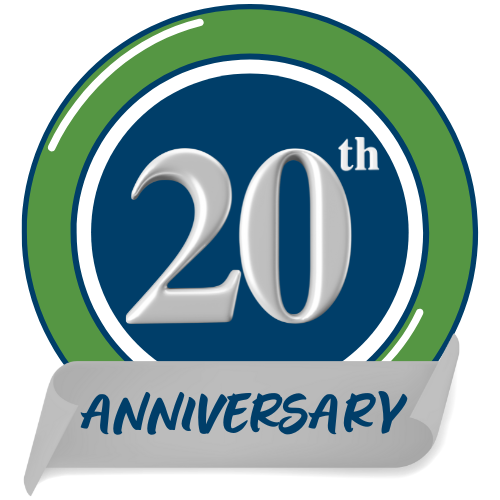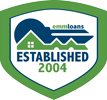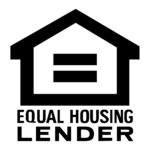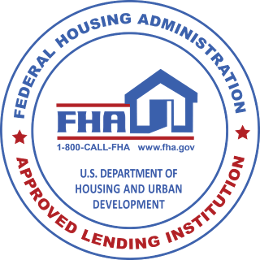When making a move, the safety of the neighborhood you are considering is often a primary concern, especially if you have children.
Your quality of life can depend on your neighborhood’s safety. While things such as crime statistics might be a good indicator of crime levels, safety isn’t always about crime. It’s about a safe environment where people are less likely to get hurt, a place where they can get help if they get hurt, and a place where they feel safe to learn, express themselves, and grow.
Like most decisions in life, there are factors to consider and trade-offs to be made when house hunting. You must make these decisions carefully, and you should leverage as much data, insight, and first-hand experience as possible to get the best possible outcome.
The Characteristics of a Safe Neighborhood
When evaluating a neighborhood to move into, there are certain things to look for. A community is likely to be safer if it has:
- Street Lighting – An adequate amount of street lighting so that if someone is considering doing something they don’t want to be seen doing, your neighborhood isn’t the place to do it.
- Children Playing Outside – Parents are more likely to let their children play outside if they feel the area is safe. When looking at the area, see if kids are playing ball, biking, and outside playing with friends. If they are, it’s likely to be a safer area. Also, look to see if there are sidewalks and biking lanes that encourage outdoor playing.
- People That are Close and Share a Sense of Community – Neighbors often watch out for one another in close neighborhoods. Does this neighborhood hold community events like farmers’ markets or block parties that bring people together? Is there a neighborhood watch program in the area? There might be street signs to indicate this, or you can ask at the local police station.
- Fire Safety – Look to see if there are fire hydrants close to the homes and a fire station nearby.
- Is There Good Medical Care Nearby? – Things sometimes happen, and when they do, you want to know there are people nearby that can help. Whether it be a health center or a hospital, look for nearby medical care that will be there should you need it.
- Thriving Local Businesses – Are there family-friendly restaurants, coffee shops, and bookstores in the area? What do the people who frequent them look like? If the neighborhood has local businesses that are doing well, it is a sign that residents have disposable income that can support these and other neighborhood-friendly activities. Look to see if the chain store brands have local stores in the area. These chains spend a lot of time and money researching for the best areas to open stores, so if you see a lot of chain stores, that’s a good sign. – On the other hand, if the restaurants aren’t around and there are just quickie marts or fast-food chains, that’s a sign that the neighborhood might not be able to support more community-friendly stores.
- Good Schools – For a school to be good, it has to offer an environment where both teachers and students can learn and grow. A fundamental element of this is a safe environment where students and teachers can focus on their studies and not have to worry about safety. Find out how good the area schools are.
- Clean Parks – Having an open park space gives children a place to play, offers a place to take the dogs, a place to play sports, a place to stay fit and to relax. You want a nearby park to be clean – clean of debris, clean of crime, clean of garbage, and clean of vagrants – so that you can get the most out of it.
Signs that a Neighborhood is Unsafe
On the flip side, there are things that, should you see them, might indicate that the neighborhood is one to avoid. A neighborhood might have problems if you see:
- Large or Constant Police Presence – It’s good to have police patrol through your neighborhood to make sure things are ok, but it’s not a good sign if they are there often on calls and dealing with issues.
- Dilapidated or Abandoned Houses or Storefronts – These are signs of a neighborhood in decline. While they might also mean lower house prices, they are a sign of danger, both in terms of criminal activity and lower house prices going forward. After all, if there was potential to make money in this neighborhood, those houses wouldn’t be abandoned.
- A Lot of Rental Properties – Studies have shown that neighborhoods with large populations of renters can be associated with higher crime rates. Since they aren’t concerned about home values or how they might be impacted, renters don’t have the same motivation to support the general neighborhood wellbeing and, because they are more transient in nature, are less likely to be involved or support community services like a school board or a volunteer fire department.
Neighborhood Safety Resources
Now that you know what to look for when you visit a neighborhood, it would be good to have some research material that you can utilize to narrow your search before driving around. Here are some tools that might be useful when assessing the safety of a neighborhood.
- Federal Bureau of Investigation Crime Data Explorer – This reporting will go down to the city level and breaks the crime statistics into different types of violent crime and different types of property crime. The database goes back to 1985, so you can look for trends. The site is free to access; no registration is required.
- The Neighbors App – Perhaps you’ve seen the ads for Ring or have heard about the company. They are the company that has the video doorbells with the “O” on them. Their technology records data on events that happen with their customers and allows neighbors to share this information. This had helped bring communities together when criminals were stealing packages from doorsteps, when disasters hit, and when animals were lost. It’s another way for neighbors to help form a community with safety in mind.
- AreaVibes – This might be the best site for getting an overall neighborhood assessment. They also detail houses that are available to buy or rent in the area. Start by entering the city or address you are interested in. When the next page appears, you will see houses for sale. In the upper right-hand corner, there is a section in the navigation bar called “livability.” Click that. It will bring you to a page that gives their overall, proprietary “Livability” score with a rating on things like nearby amenities, the cost of living, crime, employment, housing, schools, demographics, and the ability to break down further into specific neighborhoods. Towards the bottom of the page, it also has links that break out the city’s neighborhoods by safety, price, best for families/singles/renters, and other criteria.
- CityProtect – This site lets you enter a city and access the incident reporting by that police agency. It lets you view a crime map that offers a GPS map of the area with different color-coded pins, which, I assume, relate to different types of crimes. There was no coding for the colored pins, so you can’t tell what they represent, and the reporting data seemed to be very spotty, with some police agencies not offering updated data in over a year.
- Family Watchdog – This site allows you to track sex offenders. Put in the neighborhood you are thinking about moving to, and it will show you where the sex offenders are living and who they are. Utilizing a mapping system shows you the location you entered, nearby schools, where all the offenders are, and what type of crime they committed. The crimes they track are offenses against a child, sexual battery, rape, and other offenses. If the house you are considering purchasing is next door to someone identified on this system, you might think twice.
- SpotCrime – This site also uses a mapping application. When you enter a neighborhood, a map will appear that details the crimes in the area. Different symbols represent different types of crimes. When you click on the symbol, the crime details appear, such as date, time, specific address, and description of the crime. It is easy to use and gives you a quick idea of what types of crime and how much of it occurs in the area you are considering.
Conclusion
As you can see, there is a lot to consider when assessing how safe a neighborhood is. While this is just one factor to consider when looking to buy a house, it is one of the more important ones.
Take the time to look around, ask questions and do your research. If you have questions, your local loan officer might be able to help!









